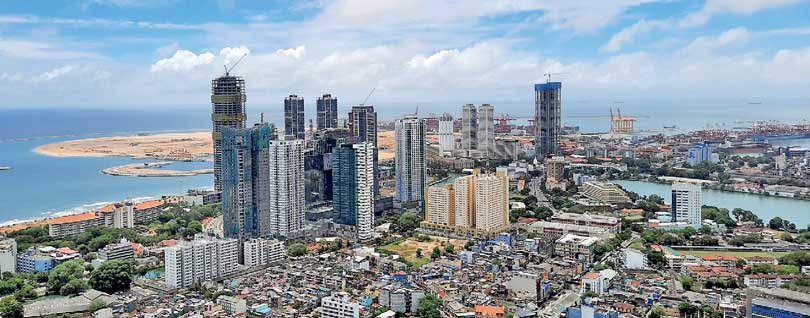Barclays says it remains “overweight” on SL ISBs
Friday, 12 July 2024 03:04 – – 205

- Considering likelihood of macro-linked triggers, estimates recovery to be 62 at 12% exit yield
- Says upside is likely from better exit yield estimates; recommends bonds with higher PDI claims
- Expresses confidence restructuring can be completed within next few months and next steps will be largely formalities before transaction can be completed
- Says Sri Lanka’s economy is in process of sharp turnaround from 2022 crisis
- Though optimistic about economy, believes upcoming political cycle and global growth outcomes will have material impact on ability to sustain economic momentum
Britain’s multinational universal bank, Barclays says it retains “overweight” rating on Sri Lanka bonds and recommends ‘buy’ those with higher past due interest (PDI) following the agreement reached in the restructuring of International Sovereign Bonds (ISBs).
“We retain our overweight rating on the Sri Lanka bonds. Considering the likelihood of macro-linked triggers, we estimate recovery to be 62 at 12% exit yield, in line with our fair value estimate of 60-65. Upside is likely from better exit yield estimates. Buy bonds with higher PDI claims: SRILAN 25/28/29/30,” said Barclays in its latest Fixed Income, Credit, Currency, Commodity, Futures and Macroeconomic (FICC) research as part of Emerging Asia Sovereign Credit.
Referring to its recent reports (Sri Lanka: Finish line?, 25 June 2024 and Sri Lanka: Tick tock, tick tock, 14 Jun 2024), Barclays said it noted several developments in late-May/June that suggested the restructuring was progressing and likely to be completed in the next few months.
Barclays…
These included Government officials and agencies recognising that progress on restructuring is critical for timely disbursals from the IMF and completion of the restructuring will accelerate foreign institution lending/activity in the country; the IMF’s disbursal of USD336mn under the Extended Fund Facility (EFF), highlighting that Sri Lanka met all quantitative targets for end-2023 and met most structural benchmarks due by end-April 2024 (or implemented with delay); the Sri Lankan cabinet approved debt agreements with bilateral creditors; and the country finalised4 the Memorandum of Understanding (MoU) with the OCC.
“In this context, the announcement from Sri Lanka and SteerCo affirms our views that the restructuring can be completed within the next few months and that the next steps will be largely formalities before the transaction can be completed,” Barclays said.
In its model (prior to Joint Working Framework), Barclays had assumed a starting coupon of 4% that stepped-up to 8% during the life of the new bonds. “We modelled a 10-year maturity extension, with amortisations on the principal starting from 2028 (amortisation rates accelerated in the last three years). We had expected 20-30% principal haircuts. At a 12% exit yield, this translated into recovery values of close to mid-50s. We then considered sweeteners for bondholders through creative recovery options for PDI and incorporating a contingent pay-out structure (like VRI or MLB). Taken together, we estimated fair value to be 60-65,” Barclays Research said.
It said notable features include a consent fee of 1.8% that will be paid upfront during the exchange, the past-due interest will have a haircut of 11% and accrual will begin from March 2024, the macro-linked bonds will trigger based on USD nominal GDP (average 2025-2027) but will incorporate a control variable (real GDP cumulative growth for 2024-2027). Under the IMF baseline, this would translate to a recovery value of 64.8 at a 12% exit yield.
Barclays in its report also said the macro-economic situation is stabilising.
“Sri Lanka’s economy is in the process of a sharp turnaround from the 2022 crisis. Economic activity is already showing signs of recovery (IMF updated its growth forecast to 2% and 2.7% in 2024 and 2025, respectively) and inflation has moderated to single digits after spiking to 70%. The IMF has also highlighted that the recovery has broadened across sectors. The external position is steadily improving, with the current account turning to a surplus (3.1% of GDP in 2023) as remittances and tourism receipts increased. Remittances have risen steadily and totalled $ 2.6 billion for 5M245 , tourist arrivals were up 75% y/y over 5M24, balance of payments had a surplus of $ 1.3 billion for Jan-Apr 2024 and foreign reserves were $ 5.4 billion at end-May 2024, resulting in inflows of $ 1.4 billion,” Barclays said.
It also noted that there is clear indication of strong reform momentum, with a focus on boosting revenues through better tax administration. This has already translated into a pick-up in fiscal revenue collection: tax revenue increased to 9.8% of GDP in 2023 and the number of taxpayers more than doubled to nearly one million.
“We are optimistic about the economy but also believe the upcoming political cycle and global growth outcomes will have material impact on the ability to sustain the economic momentum. Given this and considering the GDP thresholds for upside or downside payouts on the macro-linked bonds, we estimate that at 12% exit yields, the fair value for the bonds is 62. The estimate rises to as much as 75 with a 9% exit yield,” Barclays added in its research report.






